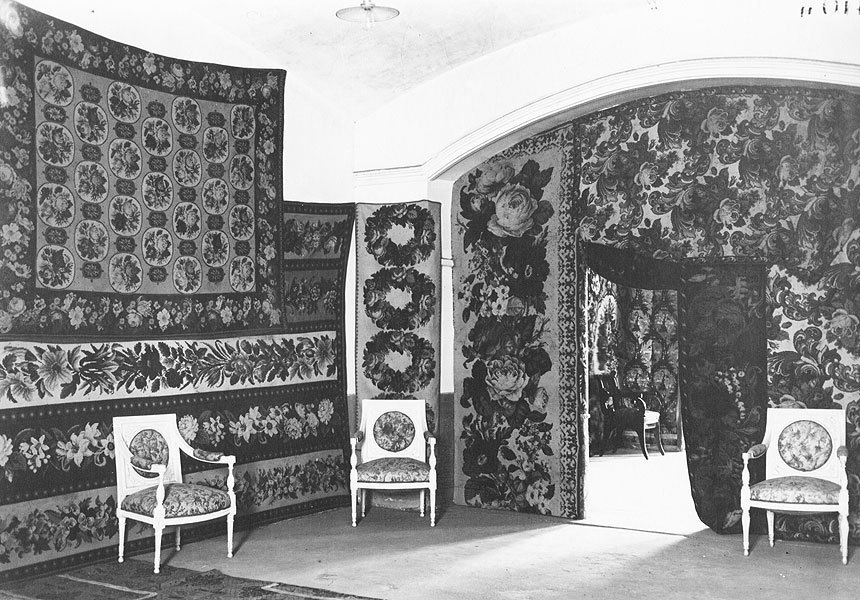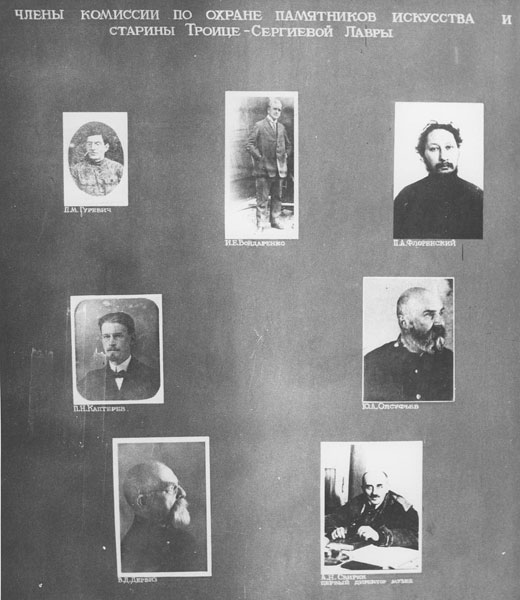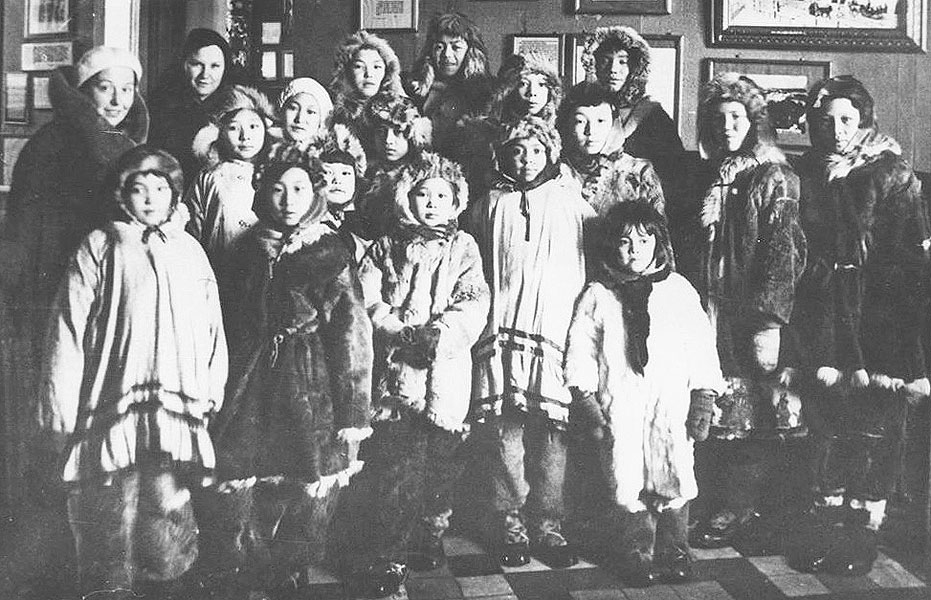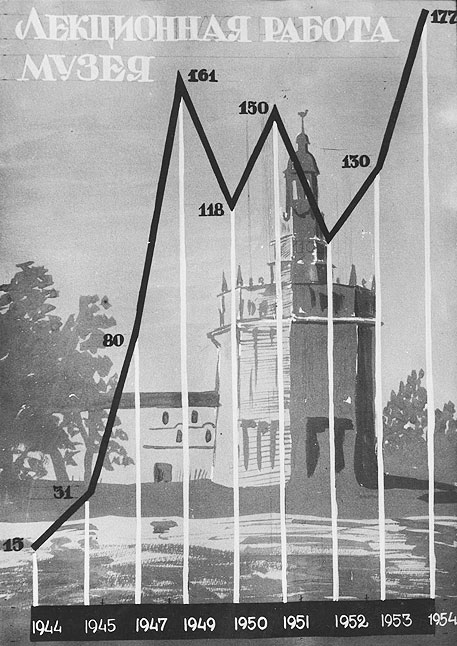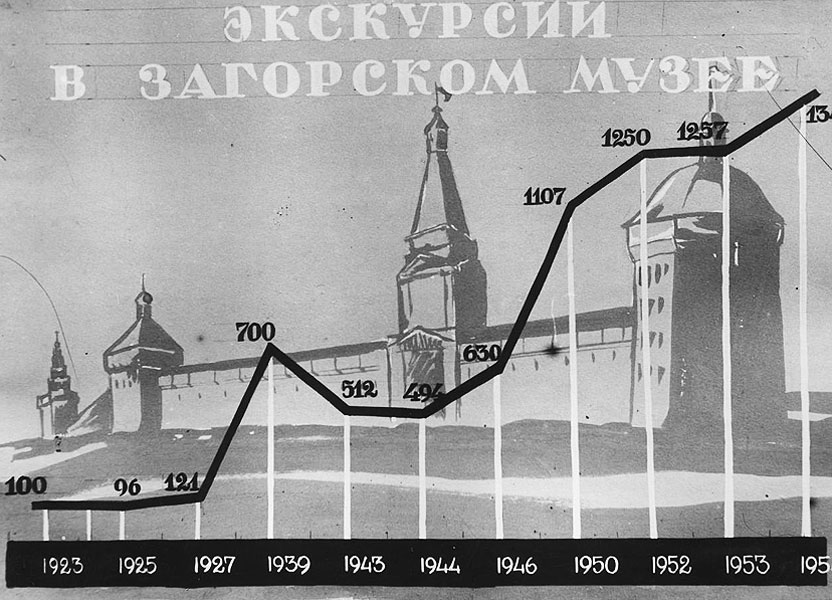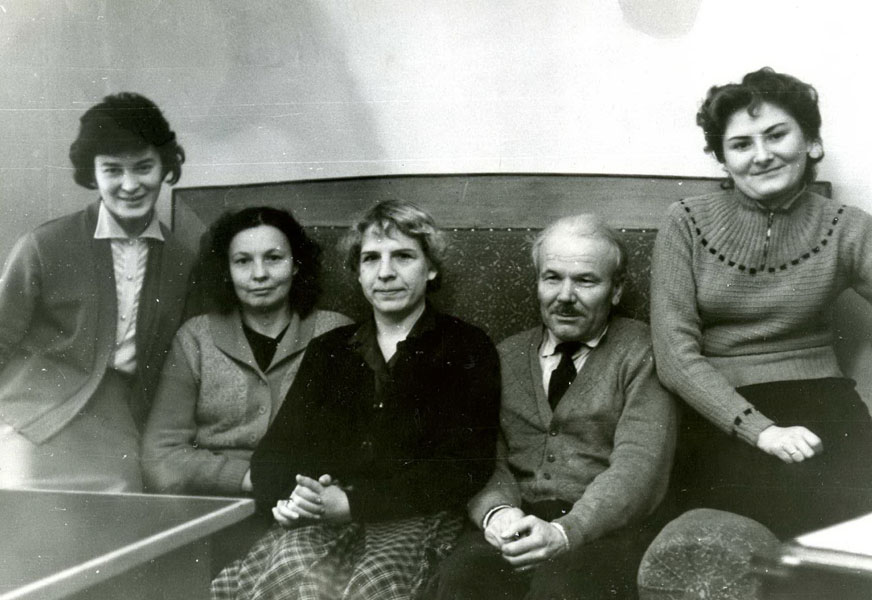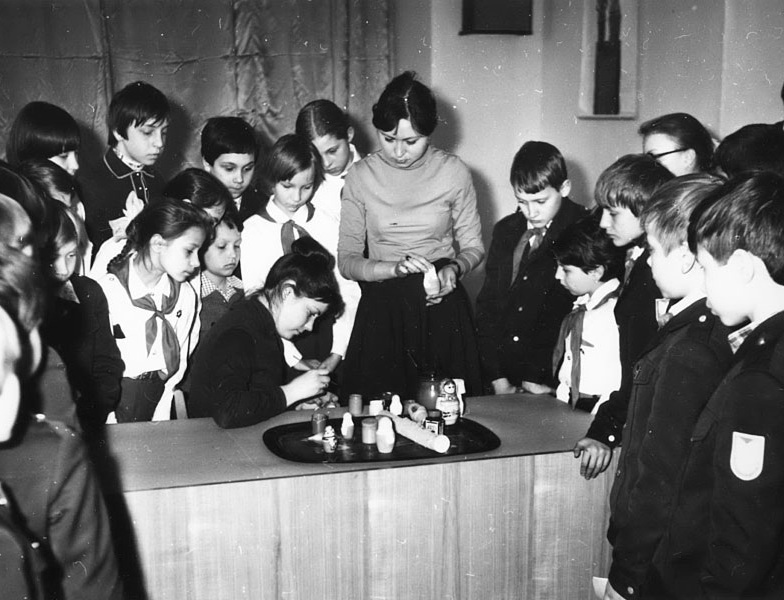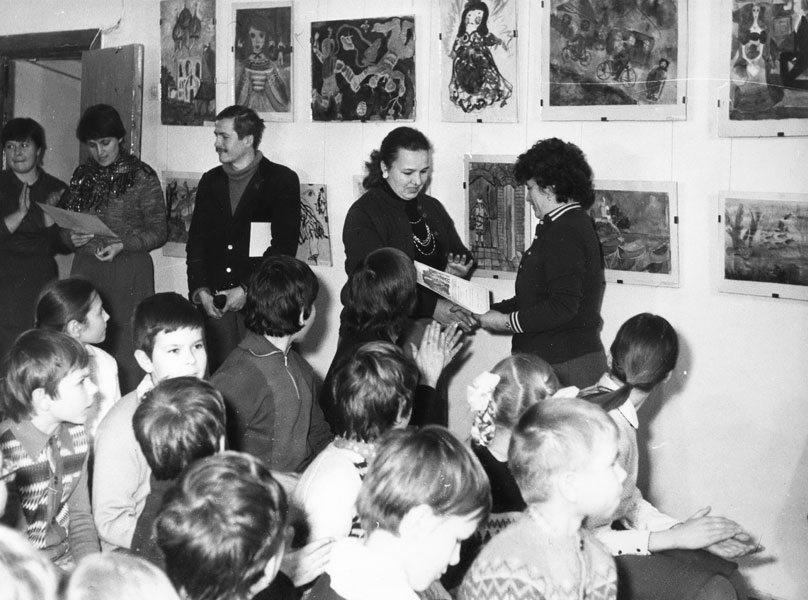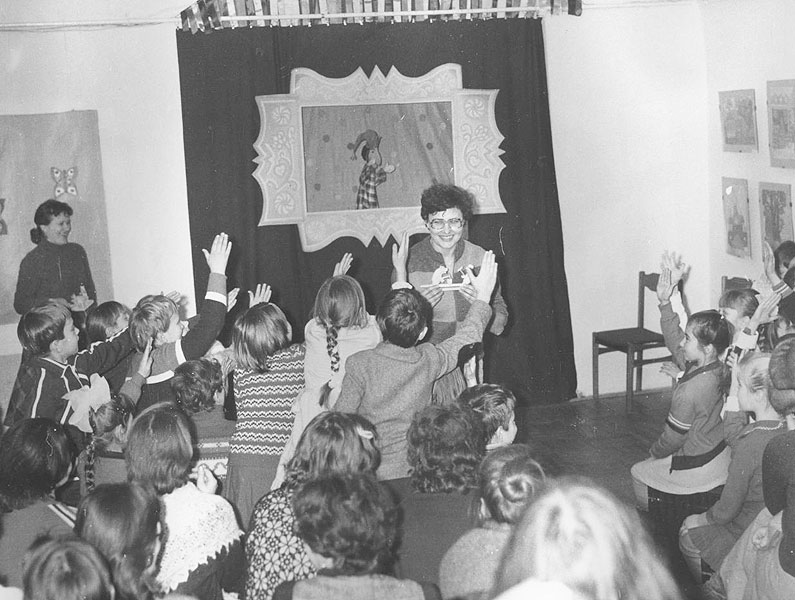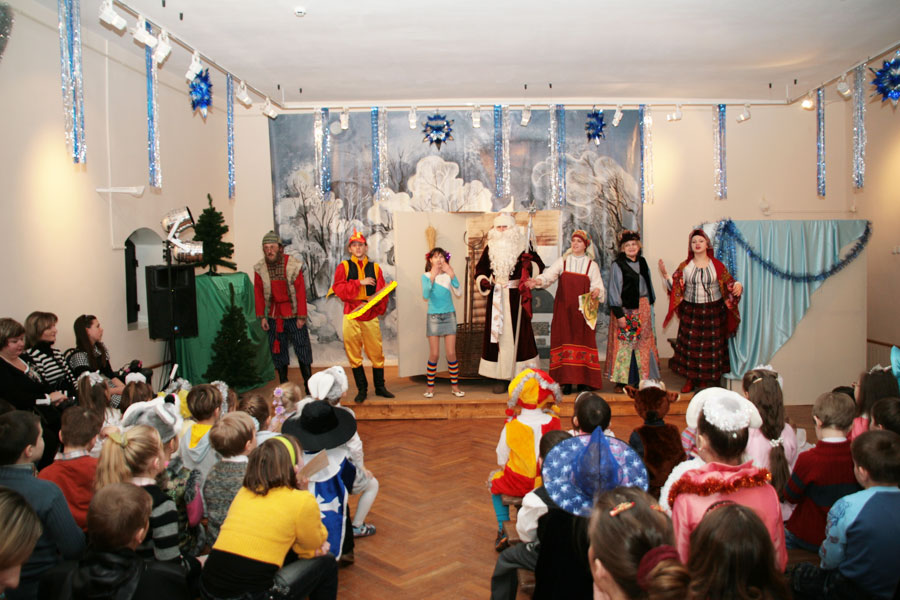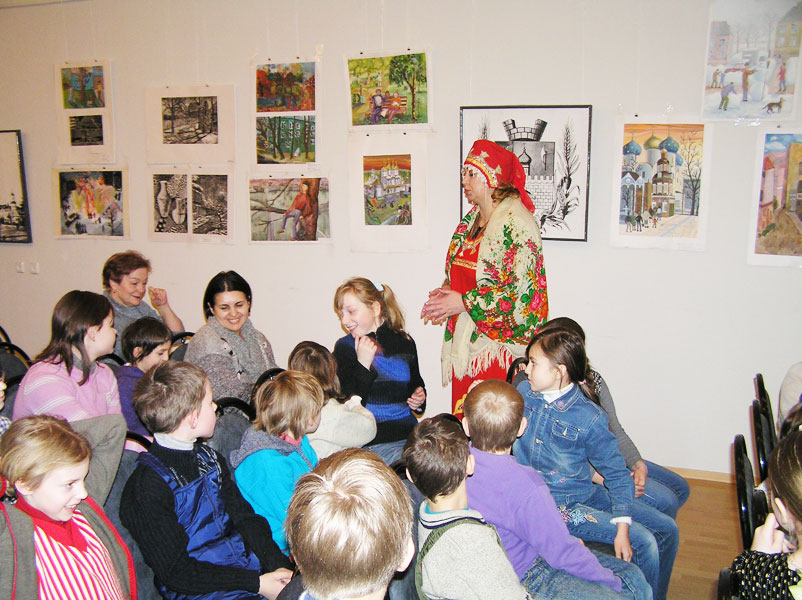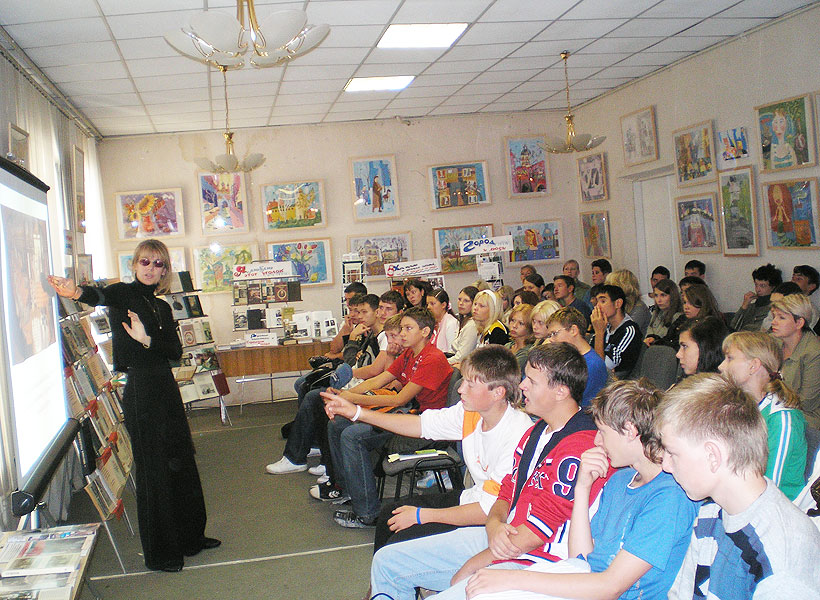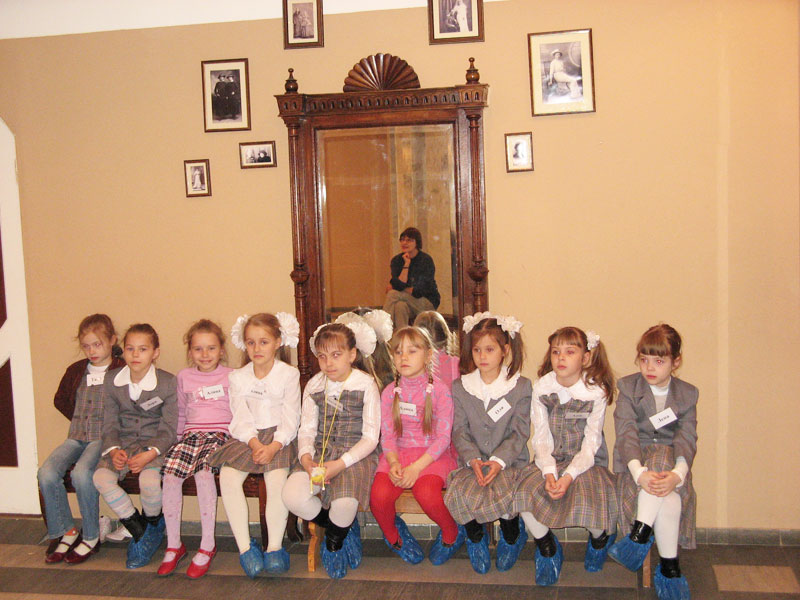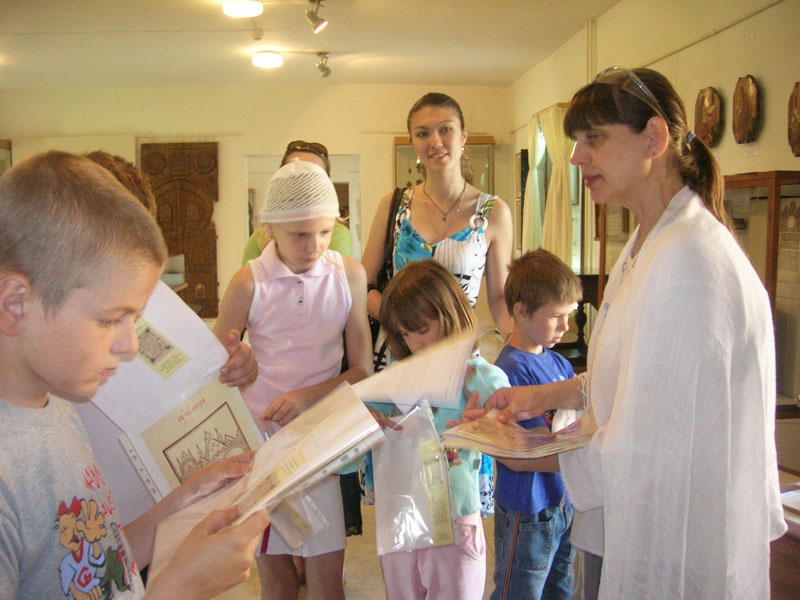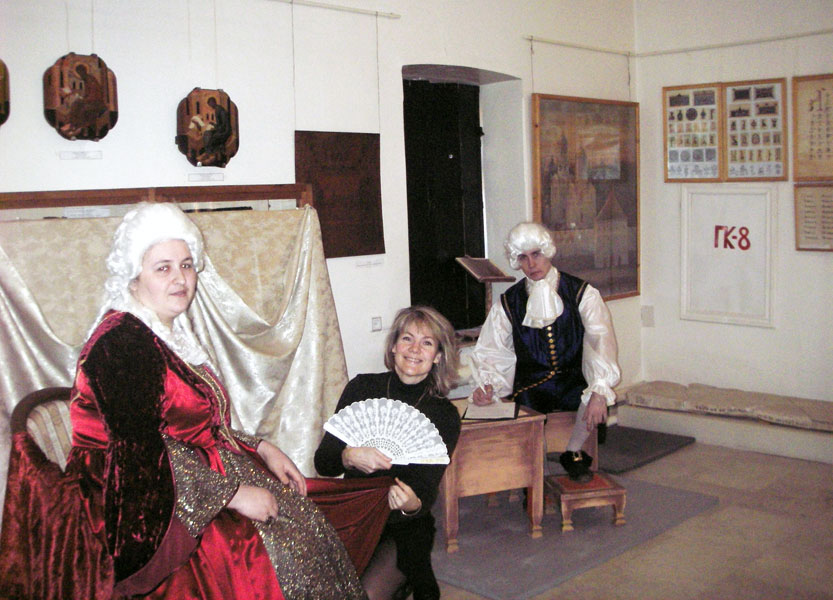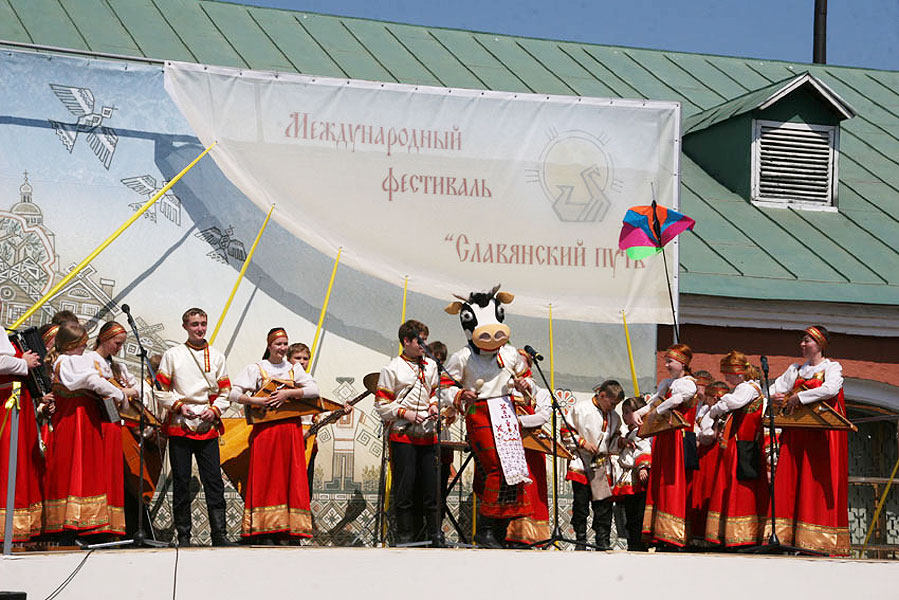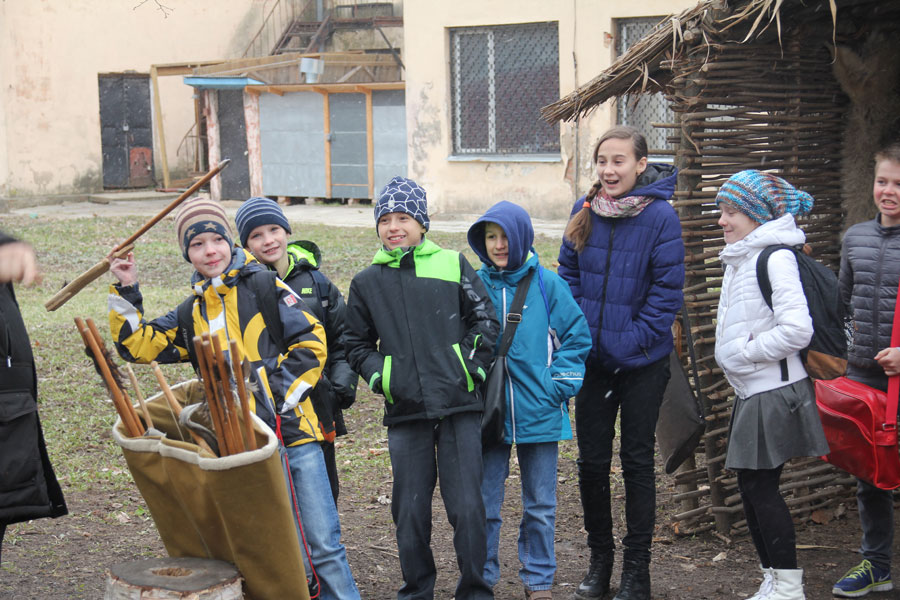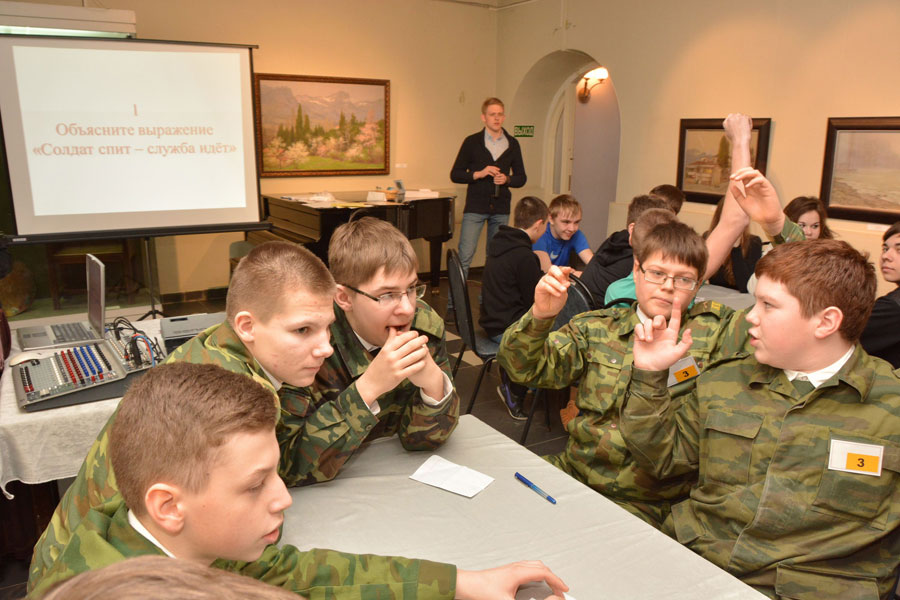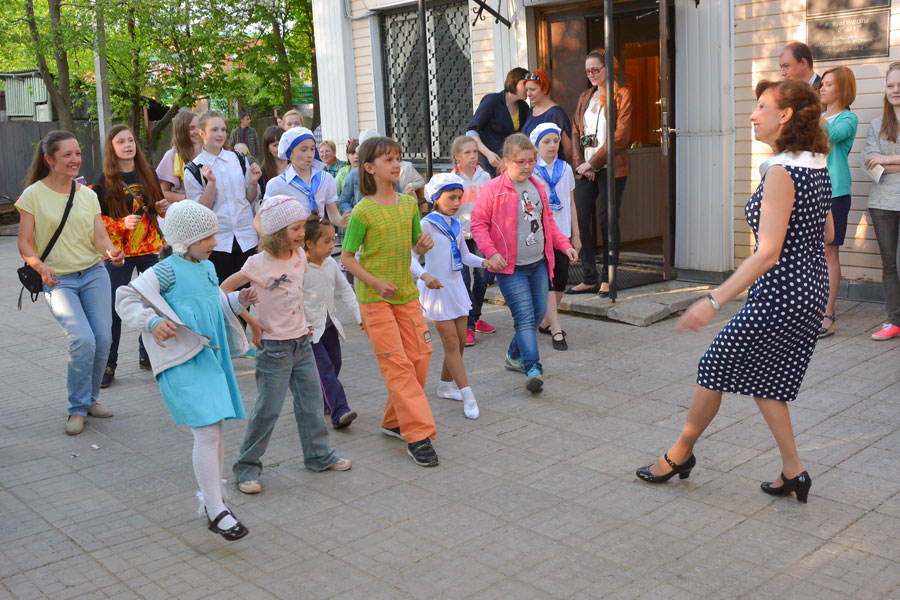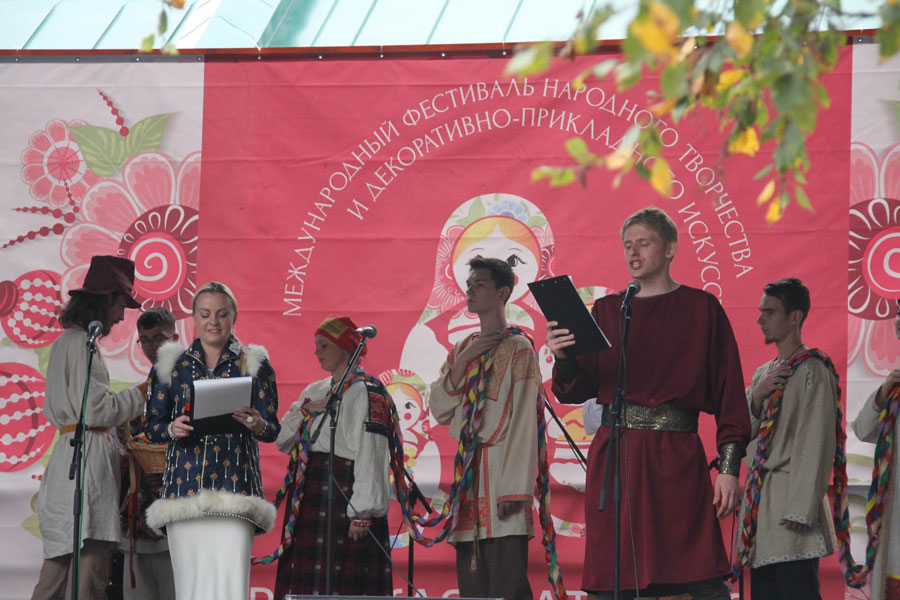History of educational activity
The main branches of education and popularization were determined by the Commission on Preservation of History and Art Monuments of the Trinity-St. Sergius Lavra. On February 23, 1919, P.A. Florensky guided the first excursion in the Sacristy. In 1921, excursions were systematic and the Museum received three thousand visitors. The records of the Commission of 1923 mentioned: “The Museum workers often had to interrupt their work and act as …tourist guides. … Though this rule did interfere with their research, the members of the Commission willingly fulfilled this duty regarding it as the principle meaning of the Museum activity”.
The members of the Commission were outstanding people of the early 20th century. Now, knowing the biographies of Yu. A. Olsufyev and P.A. Florensky, we can say that their role in the Museum organization was determined not only by the historical circumstances but by the activity of their souls. The priorities in the education work changed depending on the political and ideological directions.
In the 1920s, excursions were the main form of the educational activity. The Excursion Bureau was responsible for that work. It included not just the Museum workers.
As early as the late 1930s, the Museum paid much attention to preparing guides: training excursions were conducted by the senior research workers and department managers; lectures were delivered by the teachers of the Moscow higher educational establishments; consultations on art and history were given by the leading specialists: A.V. Archikhovsky, S.V. Bakhrushin, V.I. Lebedev, N.N. Sobolev, I.V. Zholtovsky.
In the late 1940s, they worked out the first methodical recommendations for all expositions. The were composed of the excursion texts, definition of the aim and ideological recommendations. At the same time they wrote recommendations for the excursions for junior schoolchildren of the third and fourth forms. Some of them were in the form of questions and answers.
In 1951, the Department of the Scientific Popularization of Art was established. The Regulations of the Zagorsk State History and Art Museum-Reserve, adopted by the Committee on Art of the USSR Soviet of Ministers, determined the main forms of its activity: excursions, lectures, clubs, consultations and seminars for schoolchildren and teachers.
In the 1960s, the educational work was based on the various new expositions: History of the Trinity-St. Sergius Monastery, its Necropolis, Architectural Ensemble and Methods of its Restoration, Old Russian Painting, Old Russian Applied Art, Russian Art of the 18th – 19th Centuries, Russian Folk Art, Contemporary Applied and Decorative Art. The expositions were housed in 40 halls of the floor square of 4.500 sq. m
In 1969, at the Conference dedicated to the 100th anniversary of V.I. Lenin, when the results of the Museum activity were discussed, they touched upon the problems of educational work for the first time. The significance of the Museum in propaganda of national art was stressed in 1969, when Zagorsk was included into the all-union tour of Old Russian towns called “The Golden Ring”. Since that time, the number of visitors constantly grew reaching 700.000 in 1979. The main task of the educational service was to receive travelers, so review tours for adults were organized.
Nevertheless, since the mid-1970s, the Museum paid special attention to the work with schoolchildren and students. In 1975, the perspective program of the aesthetic education for the pupils from the 1st to the 10th form was worked out. It was aimed at bringing up an individual aesthetic feeling and development of creative activity. The program was carried out in co-operation with teachers of the local schools.
Alongside with the traditional forms, like thematic excursions, cycles of lectures, circles, clubs the Museum began to organize exhibitions of children’s works, classes of decorative art, thematic programs. By the middle of the 1980s, certain educational system for each age group had been formed.
Since the 1980s, the educational practice included programs with craftsmen; meetings dedicated to the Museum collections, local history and culture and different kinds of the Museum activity. The diverse events helped to illustrate the link between contemporary art and cultural heritage and to demonstrate the artistic and historic value of the ancient monuments.
In 1985, the results were reported at the first Conference exclusively dedicated to the Museum educational activity. The reports gave serious analysis of that period, reflected peculiarities of the excursions for different categories of visitors, discussed the guides training system, presented different aspects of the Museum aesthetic education. The various forms of work, the staff qualification, stable system of professional training, that proved durable and effective, helped to adapt to the perestroika conditions when the number of visitors dropped. For all the difficulties the Museum saved the educational service and began to develop new forms involving local visitors.
Folk festivals became a new form of the educational activity. They helped to illustrate folk culture, its history and involve visitors in the process of learning. “The Christmas Miracles at the Konny Dvor” and “Grand Shrovetide” became traditional.
They included excursions as their integral parts. The harmonious combination of the main museum form and a festive performance with folk entertainments brought striking results: small children perceived the informative museum objects as easily as a New Year tale and speeches of Santa Claus.
Since 1990s, pupils of different age groups were the most frequent Museum visitors. Excursions being the main form of the work were being greatly changed. Excursions with games, performances and interactive elements were in great demand. They seemed to be popular with children and adults.
Thus, possessing a good collection of ethnography items and using the folklore material of ancient Russian wedding rituals the Museum received weddings and held wedding jubilees. The Museum also organized a performance-excursion “Let’s Play an Ancient Russian Wedding”.
To attract visitors the Museum organizes programs combining the tour of the architectural ensemble of the Trinity-St. Sergius Lavra, exhibitions outside its territory and sights in its environs.
To solve the new tasks in 1999, the Department of the Museum Pedagogic was established. It was to insure co-operation with the education system. The Museum teachers, research workers and guides worked created educational programs for different age groups. Special excursion programs and classes with games and creative tasks for junior schoolchildren helped them to cope with the material. The Museum teachers worked out several special excursions: “At Brownie Proshka’s”, “We are Looking for Hidden Treasures”, “Miraculous Transformations”, “How Russian Children Came to the Trinity”, etc..
For junior children and their parents they organized the Sunday history and aesthetic club. It met for ten years. Its four-year program included classes at the exhibitions, studios and in the museums of Moscow and Moscow Region. The creative atmosphere helped children and parents to understand each other, to learn and to develop an aesthetic taste.
There were also educational programs: “The Best Town in the World” for the pupils of the 6th – 8th form, “Living Heritage” for the students, “Local History” for the teachers. “The Local History” program for the pupils of the 6th – 8th form developed into a district competition. It was organized in co-operation with the Education Department of Sergiev Posad. The final stage with gifts for all participants, held in the Museum, looked like an exciting event.
The Museum archeology circle worked for over 20 years. Its members were active participants of the annual Museum archeological expeditions. The Museum circles “Artistic Ceramics” and “Artistic Painting on Wood” developed the traditions of the decorative art classes with obligatory painting at the expositions of the 1980s.
In 2004 and in 2005, two joint conferences were held and, in 2007, the Tourist Forum was organized. They presented the achievements in the sphere of education of the last two decades. The reports of the Museum workers described various forms of the educational activity, their peculiarities and new trends.
In 2008, the Museum-Reserve administration and the Veteran Council of the Sergiev Posad district approved a two-year social educational program “People’s University”. Its purpose was to unite elder people, to improve the quality of their cultural life and social adaptation in modern society. The program of the established faculties included “Talks on History” and “Talks on Art”, considering the diverse interests of the expected audience.
In the early 2000s, the Museum began to organize festivals to mark “The Day of Slavic Written Language and Culture”. In 2009 and in 2010, the international festivals “The Slavic Way”, marking the event, were held in Sergiev Posad for the first time. Besides, the Museum participated in various festivals, feasts and competitions in other Russian towns, such as the XI Moscow “Masters”( children arts and crafts festival) in 2008 and International competition-feast of children’s applied and decorative art “Easter Egg” in 2012. The Sergiev Posad Museum-Reserve is a permanent participant in the all-Russian “Intermuseum” festival and the “Intourmarket” tourist exhibition .
In the course of the last decade (2007 – 2017) the educational section of the Museum introduced many new, modern forms: interactive programs at the exhibitions, quests, films, musical and literary parties, flash-mobs in the open air during mass eventss, intellectual salons, etc. In addition to the usual excursions various interactive classes at the exhibitions were worked out.
The Museum pedagogues prepared many interesting programs for children, schoolchildren and family groups in the Museum complex “Konny Dvor”.
The interesting programs are “Muzeyenok” [Little Museum Goblin] (for children gardens), “The World of a Primitive Man”, “Chest Riddles”, “Visiting Little Brownie”, “Secrets of an Old Craftsman” (interactive, entertaining program presenting Russian handicrafts).
Schoolchildren prefer quests such as “Saving the Empress” (for students and schoolchildren from 14 years old), “One Victory for All” (the quest starting at the Glory Memorial with the eternal fire), “Learning under Sherlock Holmes”, etc.
The annual events: New Year Tree Parties, “Shrovetide”, “Russian Matryoshka” festival, all-Russian actions “The Museum Night” and “The Night of Arts”– attract a lot of visitors from Sergiev Posad and other towns.
The Sergiev Posad citizens have recently began to mark in the Museum their family events: weddings, children birthdays, school graduation ceremonies.
Literature
1. Manushina T.N. Nauchno-prosvetitelnaya rabota Sergievo-Posadskogo muzeya-zapovednika. (Educational Activity of the Sergiev Posad Museum-Reserve) /Sergievo-Posadsky muzei-zapovednik. Soobshcheniya 2005. – M.: Indrik, 2006. – PP. 297 – 312.
2. Kruglova T.I., Naumova S.G. “Prikhodite k nam v muzei” (“Come to Our Museum”) /Sergievo-Posadsky muzei-zapovednik. Soobshcheniya 2005. – M.: Indrik, 2006. – PP. 312 – 327.
3. Integratsiya lichnosti v natsionalnuy i mirovuy kulturu kak osnova sovershenstvovaniya sovremennogo obshchestva. (Integration of an Individual into National and World Culture as a Basis for the Improvement of the Contemporary Society) // Materialy nauchno-prakticheskoi konferentsii, g. Sergiev Posad, Mosk. Obl., 22 – 23 aprelya 2004 g. – Sergiev Posad: OOO “Vse dlya Vas”, 2004.
4. Gumanitarnoye razvitiye lichnosti – zabota sovremennogo obshchestva. (Humanitarian Development of an Individual – a Task of the Contemporary Society.) // Sb. nauchnykh trudov. /Tsentralny institute upravleniya economiki turistskogo bisnesa – filial RMAT. – Sergiev Posad: OOO “Vse dlya Vas”, 2005.









